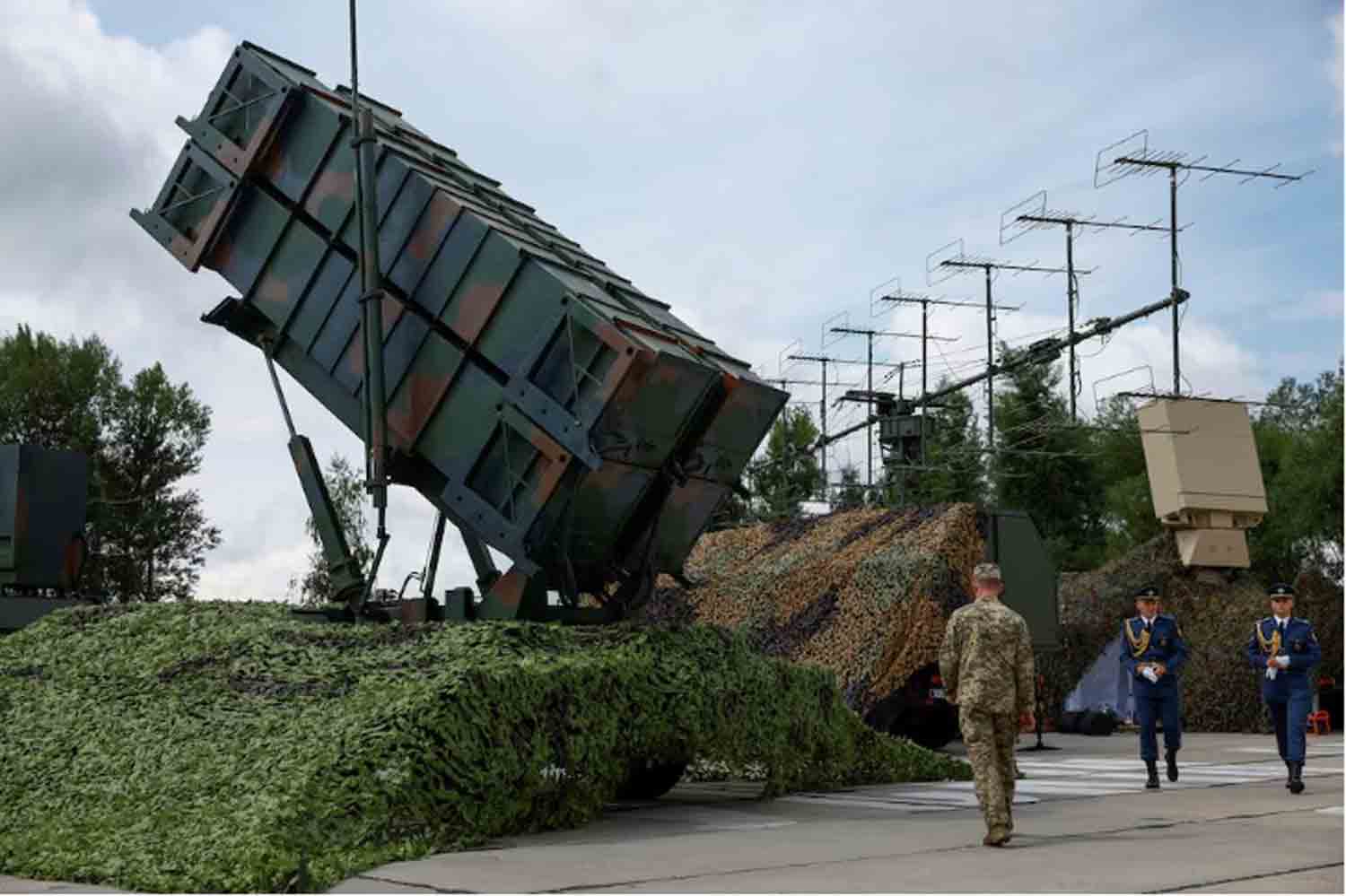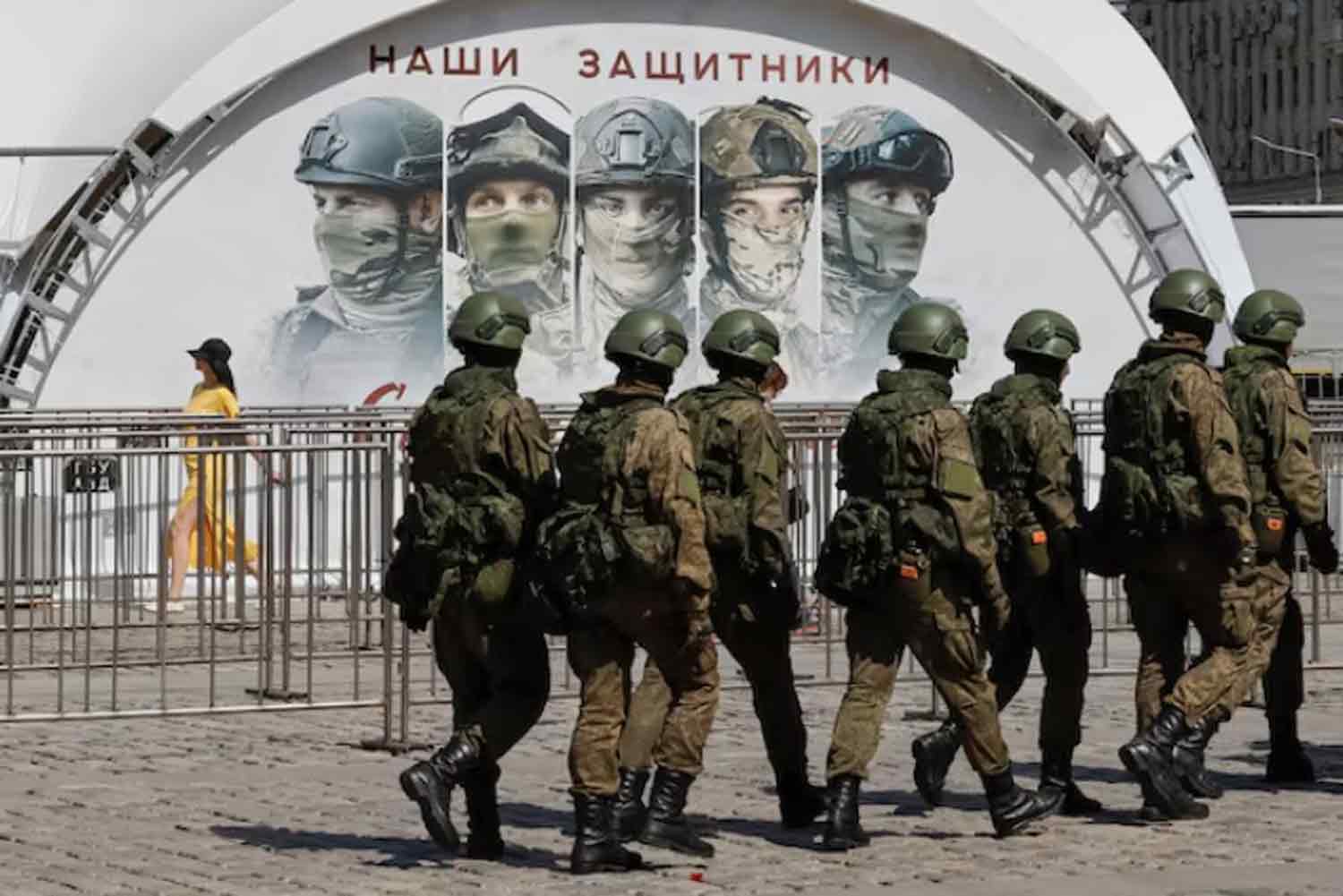Russia’s potential espionage activities seem to have extended to Germany, targeting a crucial military facility where Ukrainian forces are being trained to operate the Patriot Air Defense System.
According to a report by the German publication Der Spiegel on February 9, unidentified drones, believed to be linked to Russia, were detected over the Schwesing Air Force base, where Ukrainian personnel are undergoing training on Patriot missile defense systems. German military officials are currently investigating these suspected espionage incidents.
A leaked Ministry of Defense report indicated that six drone sightings occurred between January 9 and 29 at the high-security site near Husum.
These drone activities took place despite the implementation of anti-drone countermeasures, including the HP47 system, which employs radio jamming techniques to detect and neutralize drones, raising questions about the effectiveness of these protective measures.
German authorities have been unable to compel the unidentified drones to land or ascertain their origin. However, local media reports have linked these drones to the Russian intelligence service.
Additionally, Der Spiegel noted that vehicles displaying Russian diplomatic license plates have been observed near the strategic military site, which serves as a training ground for both German and Ukrainian forces.
The Russian military possesses advanced drones that it regularly deploys for Intelligence, Surveillance, and Reconnaissance (ISR) missions against its opponents.
If Russia is indeed engaged in espionage, it is likely aimed at gathering vital intelligence regarding the functionality of these combat-tested air defense systems, which have posed significant challenges for Russian forces during the conflict in Ukraine.
The Patriot missile batteries, supplied to Ukraine by Germany and other NATO allies, have played a crucial role in safeguarding both Ukrainian military personnel and civilian infrastructure, especially in the Kyiv region. This system is a mobile, ground-based missile defense interceptor capable of detecting, tracking, and neutralizing cruise missiles, short-range or tactical ballistic missiles, fighter aircraft, and unmanned aerial vehicles.
The Patriot system comprises four primary components: interceptor missiles, launchers, an engagement control center, and a radar system. It is capable of launching multiple missiles in a single engagement to defend against aircraft, missiles, or rockets.
Ukraine has asserted that the Patriot systems successfully intercepted the Russian hypersonic missile Kinzhal, which President Vladimir Putin had touted as unbeatable.
Furthermore, reports suggest that the Patriot system has consistently demonstrated its ability to intercept a range of Russian weaponry, including missiles from distances of up to 130 miles (approximately 209 kilometers) and aircraft such as Su-34 fighters at around 100 miles (160 kilometers) away.
Germany has dispatched four Patriot launchers along with several Patriot missiles to Ukraine to enhance its defense capabilities. Furthermore, Berlin has positioned two Patriot missile defense batteries and approximately 200 German personnel in Rzeszów, a crucial hub for Western military assistance to Ukraine located in Poland.
In December 2024, Ukrainian President Volodymyr Zelenskyy called on NATO allies to provide an additional 10 to 12 Patriot systems to protect Ukrainian airspace from an ongoing wave of missile attacks from Russia. This may shed light on Russia’s strong interest in the Patriot air defense system.
At the time of this report, the Bundeswehr has not officially confirmed the Kremlin’s involvement in recent drone activities. Nevertheless, Germany has observed numerous drone sightings near sensitive military installations in recent weeks.
Germany has positioned itself as a leading provider of military support to Ukraine and has established itself as a key player in training Ukrainian soldiers in the use of advanced Western weaponry.
According to the Bundeswehr website, “Training on weapon systems such as the LEOPARD A1 tank, the MARDER armored personnel carrier, the PATRIOT missile defense system, or the PANZERHAUBITZE 2000 demands the highest level of expertise from the trainers.”
Recent reports suggest a rise in drone activity over military installations throughout Germany. For example, suspected Russian drones have reportedly conducted surveillance flights over Ukrainian troops engaged in training with the Leopard-2 Main Battle Tank (MBT).
Over the past year, drones have been spotted near key sites, including the US military airbase at Ramstein in West Germany, training grounds for Ukrainian forces, and facilities operated by the German defense contractor Rheinmetall. A significant event occurred in November of last year when a drone approached a British aircraft carrier docked in Hamburg.
Additionally, the German publication BILD noted that high-speed drones were seen flying over nuclear power plants in the vicinity of Brunsbüttel.
More recently, on January 13, authorities in Bavaria reported the sighting of up to ten unidentified drones over the Manching airfield, which serves as a military airport and the production site for the Eurofighter Typhoon.
There has also been an increase in espionage activities in Germany, reportedly connected to Russia. Last year, two individuals with German-Russian nationality were arrested on suspicion of planning sabotage, which authorities described as a significant attempt to disrupt military support for Ukraine.
In response to the drone threat, the German government has approved a strategy allowing the military to intercept and shoot down drones that pose a risk to critical infrastructure and military sites. This policy was endorsed by Chancellor Olaf Scholz’s cabinet on January 15.
Maximilian Kall, a representative of the interior ministry, stated last month: “In light of Russian aggression and the significantly altered security landscape over the past two years, we are witnessing a rise in drone activity over military sites and essential infrastructure—drones that cannot be effectively addressed by police measures alone.”
Currently, regulations permit the military to issue warning shots or redirect drones, but they are prohibited from shooting them down. Nonetheless, the suggested revision to the Aviation Security Act would authorize the Bundeswehr to take action against drones when threats to critical facilities or human lives cannot be adequately managed through police efforts.
Discover more from Defence Talks | Defense News Hub, Military Updates, Security Insights
Subscribe to get the latest posts sent to your email.





